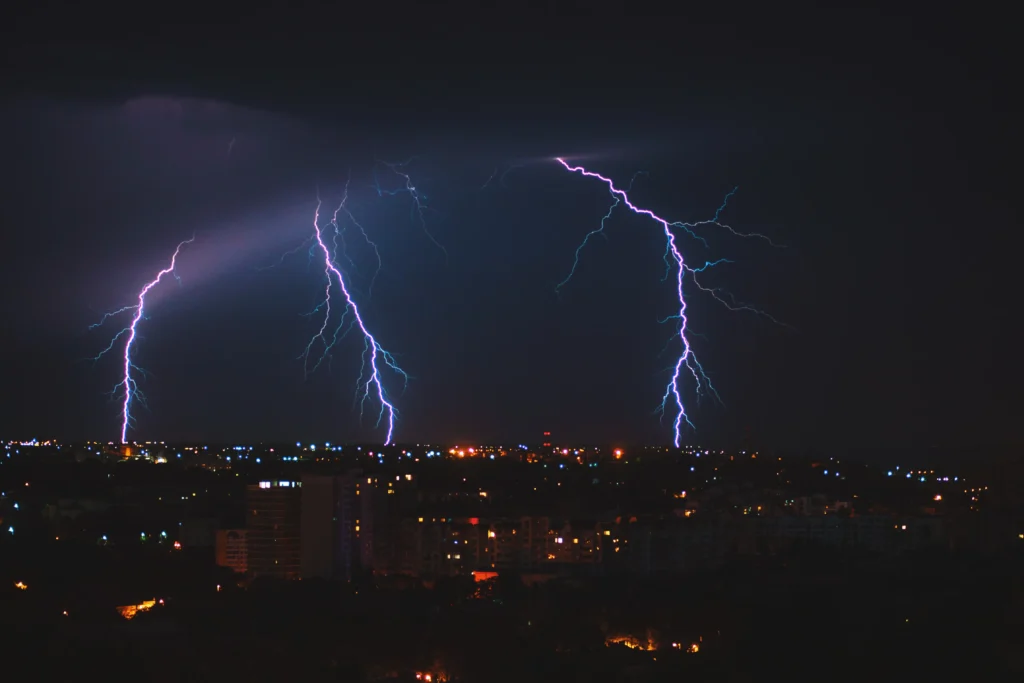The terrifying power surge can seem daunting.But with the right knowledge and tools, you can confidently handle any power surge issue that comes your way. This guide to DC SPD will provide a detailed overview so you can make an informed purchasing decision.
What Is A DC Surge Protective Device ?
A DC Surge Protective Device (SPD) is a must-have guardian for any solar power system owner. In the event of a lightning strike or grid fault, the DC SPD acts as a security guard that continuously monitors the current and takes immediate action. It instantly catches that extra surge and safely sends it into the ground.
How to Choose A Perfect DC Surge Protective Device?
Choosing the right DC surge protective device only requires focusing on four key points to ensure your system is safe.
Get the Voltage Right.
You should make sure the DC surge protective device’s voltage rating fits your system. Most home solar systems run on 12V, 24V, or 48V. Picking the correct voltage is like choosing the right size battery—it just has to match for everything to work properly.
Choose strong protection (surge capacity).
Surge capacity is how much “punch” the DC SPD can take. A higher number means it can handle bigger surges from severe weather.
Speed is everything (response time).
When a surge hits, a good DC surge protective device reacts in the blink of an eye. The faster it works, the less chance there is for any damage to your important equipment.
Select the correct type of DC surge protective device.
DC surge protective devices vary by model and function.You need to choose the right device.
Type 1 DC SPDs are your heavy-duty shield against a direct lightning strike.
Type 2 DC SPDs are the most common for homes, protecting against large surges that come from outside.
Type 3 DC SPDs are point guards, offering an extra layer of protection right at your most sensitive devices, like the inverter.
How to Easily Install DC Surge Protective Device?
Installing your DC SPD correctly is key to ensuring it works when you need it.
Safety is the first: turn the power off. Before you start, always switch off all power.
Then you need to find the best spot. Place the SPD as close as you can to the device you want to protect, usually the inverter or the main electrical panel. The DC surge protective device is closest to the equipment to better protect it.
Next be sure to connect the wires correctly.Follow the maker’s instructions to connect the wires between the positive and negative terminals. Most importantly, make sure the SPD is properly grounded. Good grounding is the path that allows excess surge to be safely diverted away.
Finally, a final check is needed.Once everything is connected, turn the power back on. Most DC SPDs have a handy status light. A green light means you’re protected. A red or flashing light is a sign that something might be wrong.
What Can We Do to Maintain DC Surge Protective Device?
To ensure that the surge protector is always in working order, it is necessary to perform some checks regularly.
Do a Visual Check
Every few months, take a quick look at your DC SPD. If you see any cracks, burn marks, or rust, it’s probably time for a replacement.
Watch the Light
A steady green light indicates that the DC SPD is functioning normally. If the indicator light turns red or starts flashing, it means the device is not functioning properly and needs to be replaced with a new one.
Check After a Storm
After a big thunderstorm or if you suspect a major power surge, check your SPD immediately. Even if it looks fine, it may have used up its protection and needs replacing to be safe.
What else can you learn?
The existence of DC SPD provides reliable protection for your equipment against surges, ensuring stable operation. From an economic perspective, this greatly reduces the repair and replacement costs of equipment damaged by surges, thereby improving the return on investment of the equipment.
So don’t wait for a power surge to damage your system. Contact our experts today for a free, friendly consultation and find the perfect DC SPD for you.
